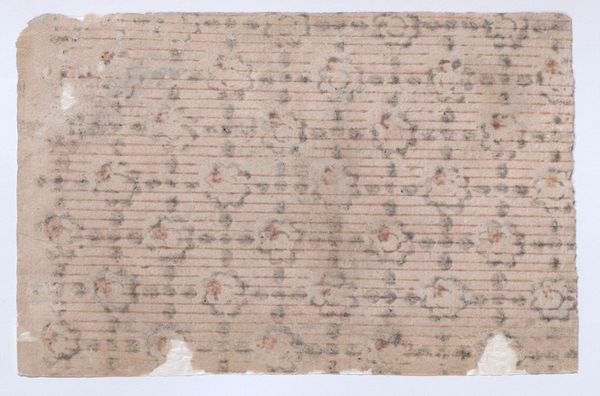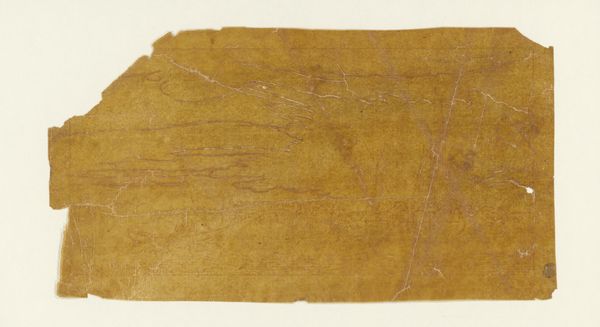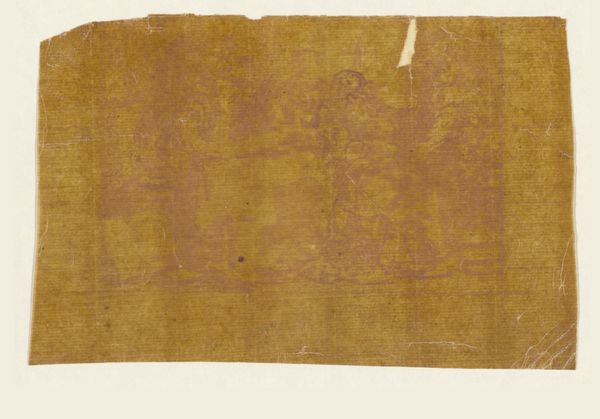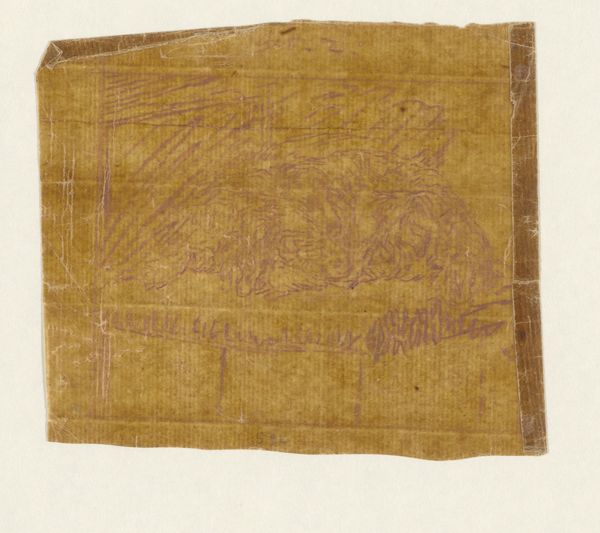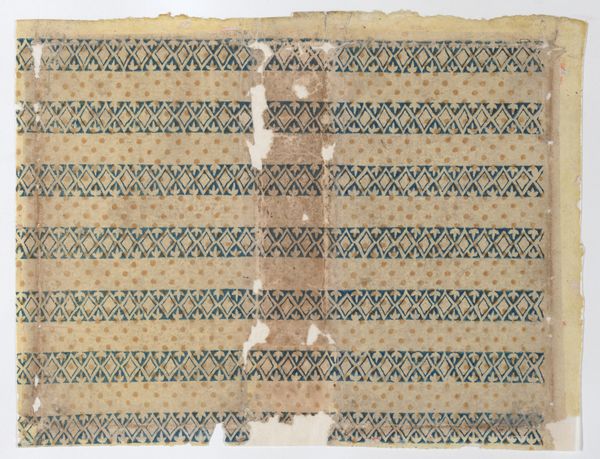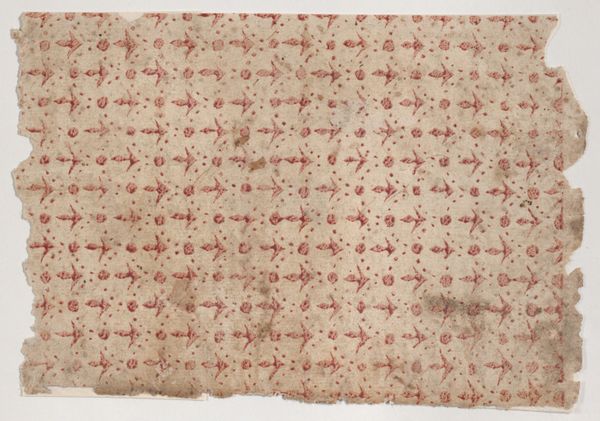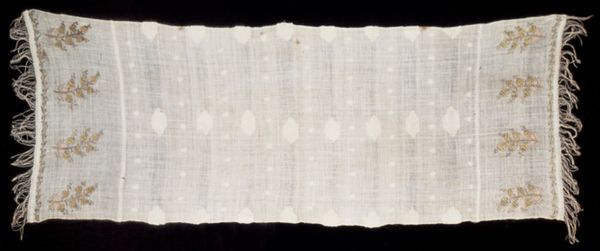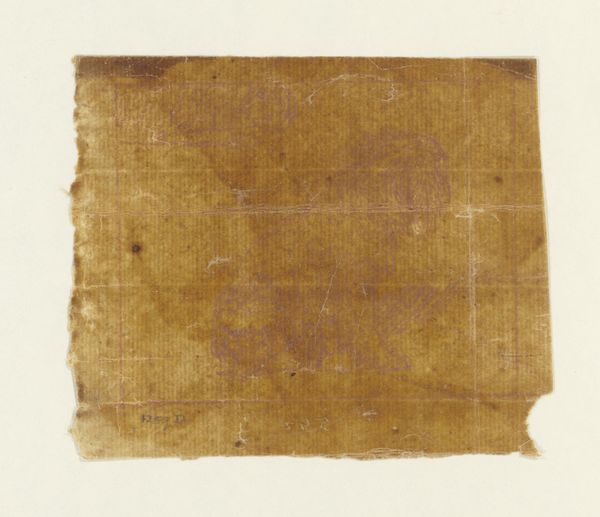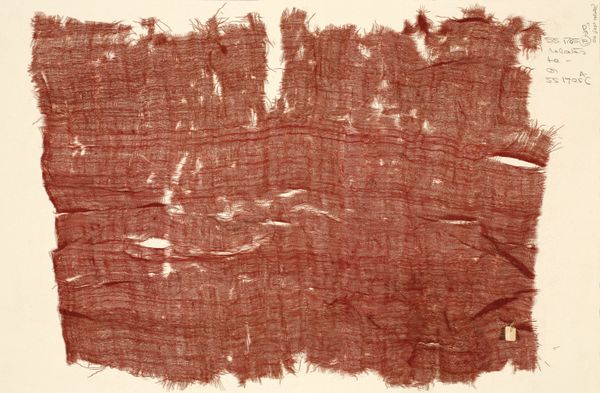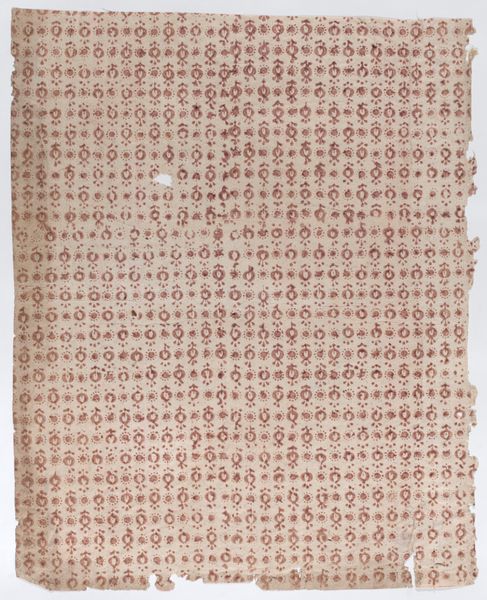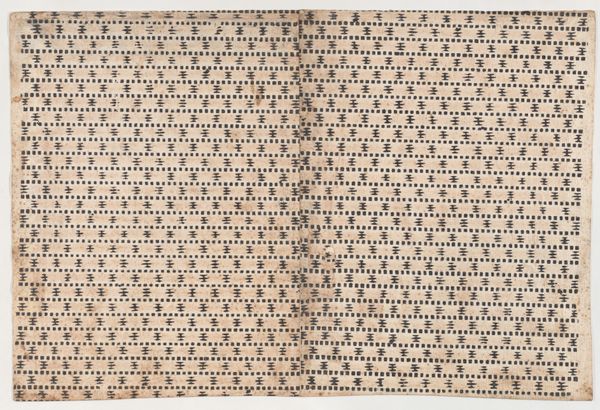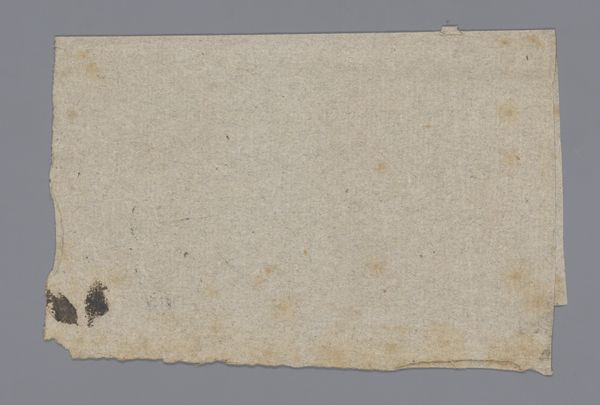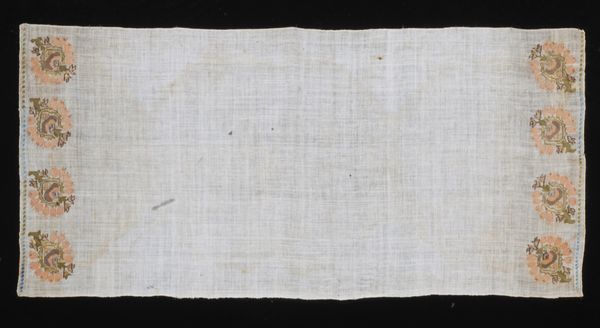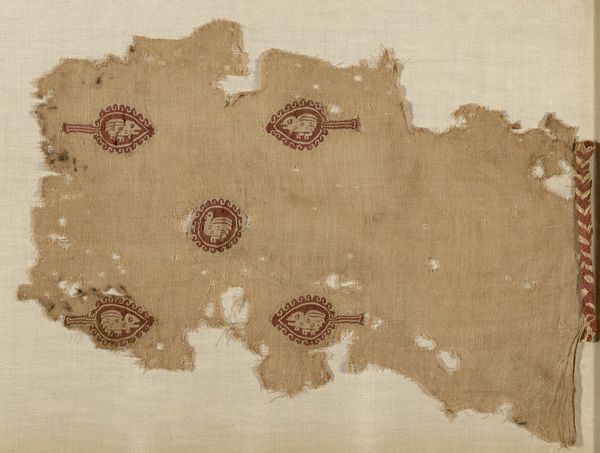
textile, cotton
#
asian-art
#
textile
#
cotton
Dimensions: 13 1/2 x 9 9/16 in. (34.29 x 24.28 cm)
Copyright: Public Domain
Editor: Here we have "Chinz Fragment" dating back to the 18th century. It is a cotton textile piece, currently residing here at the Minneapolis Institute of Art. The golden patterns really pop against that ochre ground! How would you interpret the arrangement of these golden embellishments? Curator: This fragment offers a compelling study in surface design. Note the interplay between the ochre field and the applied golden motifs; their regularity establishes a rhythm, yet the fragment's edges disrupt a sense of predictable repetition. Consider how the use of textile, with its inherent grid-like structure, influences the perception of pattern. Editor: It’s fascinating how that tension is built into a seemingly simple design. Do you think the fragment’s incompleteness influences how we read its patterns and shapes? Curator: Undoubtedly. The raw edges deny a complete reading, challenging the viewer to imagine the textile’s original scope and purpose. The surviving portions, especially the golden details, assume increased importance. Focus on the quality of these: how does the application of gold leaf, or possibly metallic paint, affect the overall texture? What feeling do you perceive from this choice of material? Editor: There is a tactile feel—it feels very rich, despite the fragment being incomplete. What do you see as its strengths compositionally, outside of just its ornamentation? Curator: It cleverly employs a structural foundation to explore pattern recognition, forcing our eye to bounce around to visually resolve figures. We observe that the integrity of the grid gives structure while still creating a composition which is not excessively formal. The deliberate lack of rigid uniformity lends dynamism to the structure and promotes deeper consideration of color. Editor: That makes so much sense when you describe it in terms of a structured but evolving grid. Now I’m seeing so much more. Thanks! Curator: I find myself returning to its materiality, a tangible thread to its era. There's value in considering what’s been lost and what remains—it truly encapsulates the aesthetic concerns that underpinned this type of 18th century Chinz fragment.
Comments
No comments
Be the first to comment and join the conversation on the ultimate creative platform.
